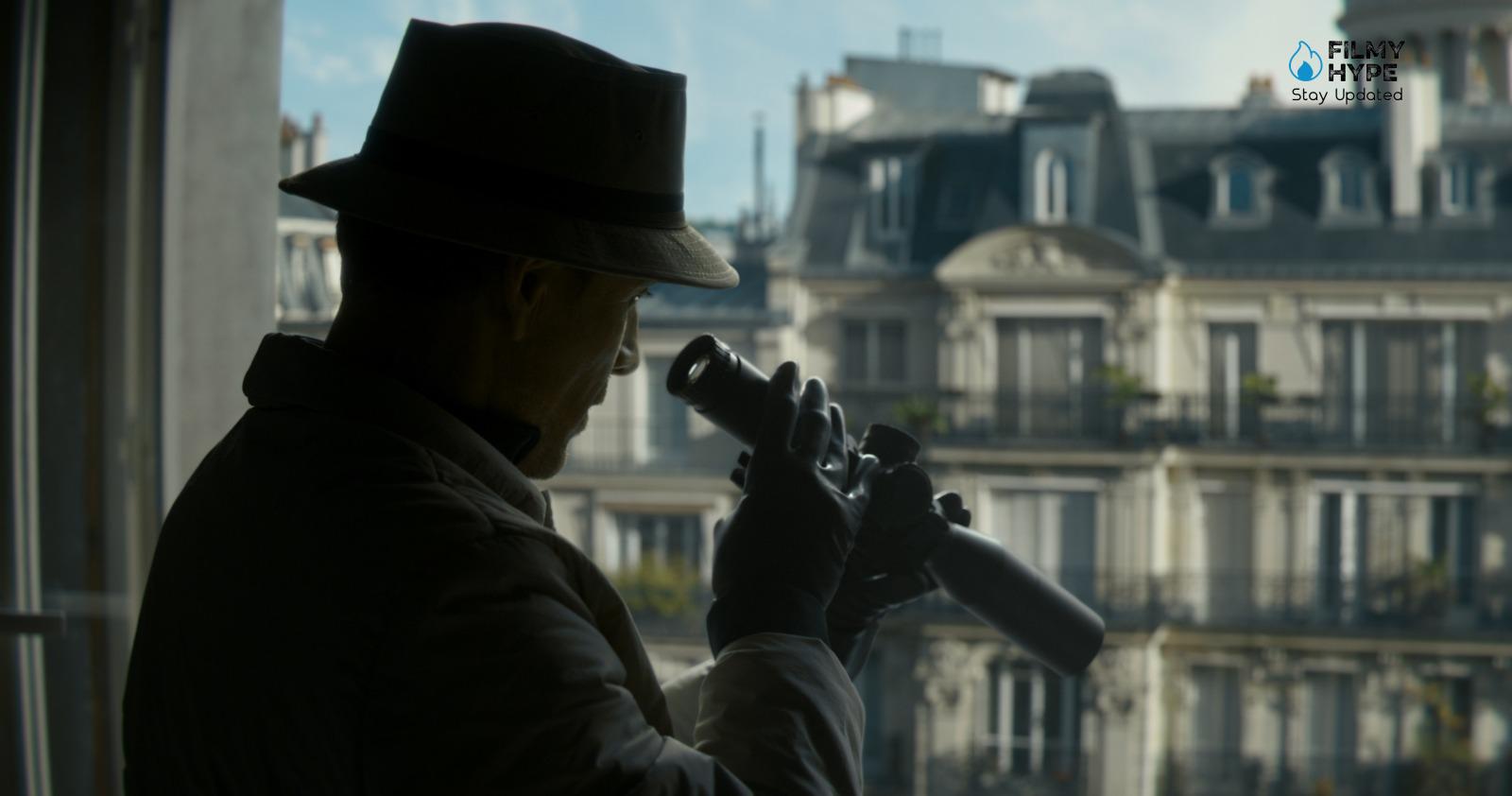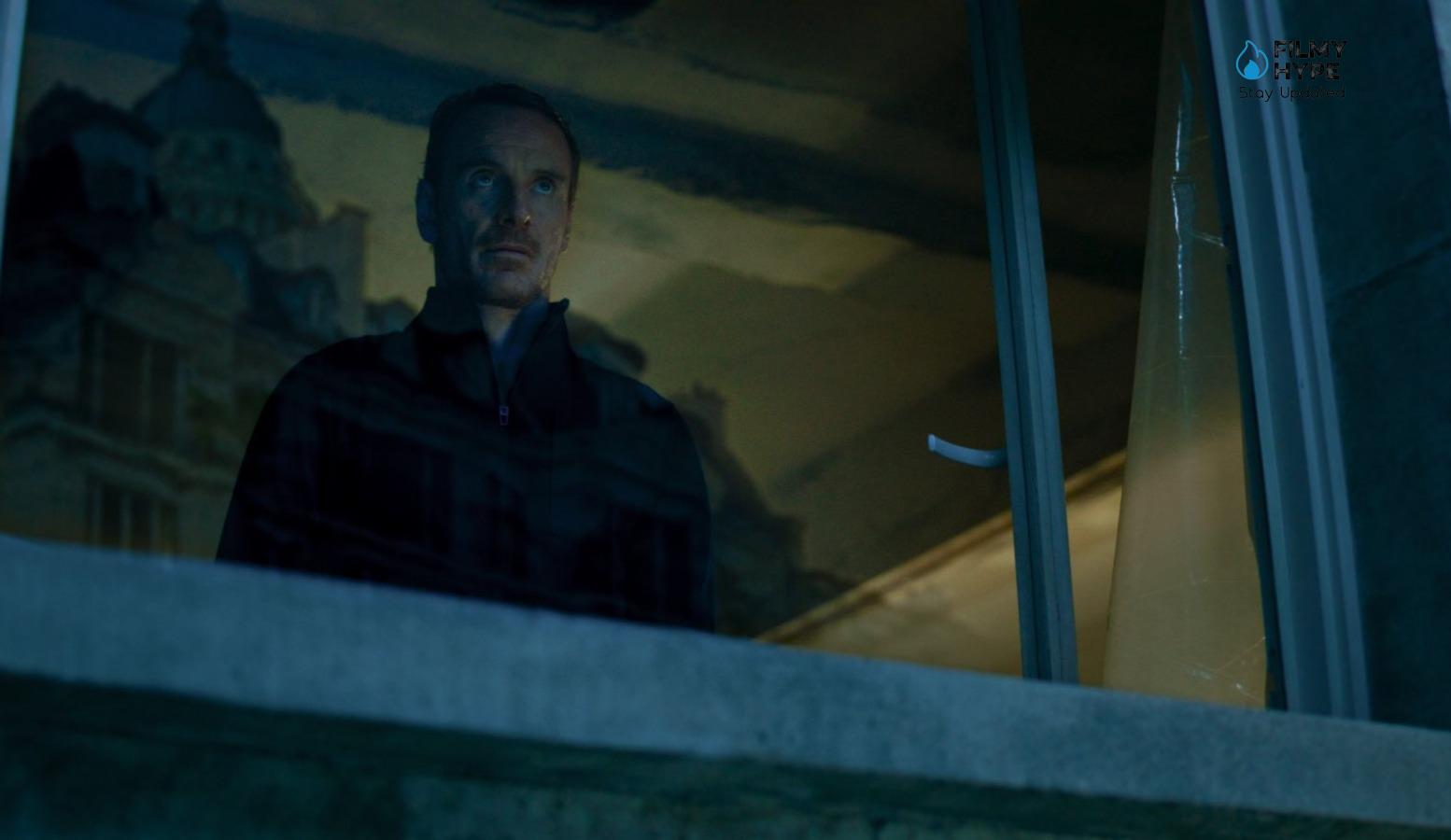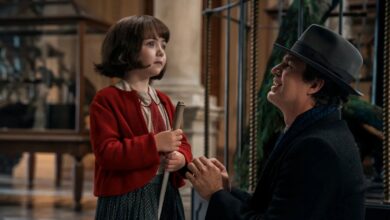The Killer Ending Explained Netflix (2023): Who is The Killer Talking To? The Meaning of the Film’s Ending
The Killer is available on Netflix from November 10, 2023. This is a thriller film starring the actor Michael Fassbender, this time as a nameless, solitary, cold, and without any conscience murderer. Every time he commits a crime, he waits in the shadows and then carries out his plan. In the thriller directed by David Fincher on Netflix, the assassin is on a mission in Paris, where he sees an unnamed target killed. But something unexpected happened this time. Let’s now see together the summary of the plot and how it ends. Premiered last September at the 80th Venice Film Festival, the film stars actor Michael Fassbender (Shame, 12 Years a Slave, Steve Jobs) as a paranoid hitman, an unnamed assassin. His life is dictated by an exact and iterative code, until – after failing a mission by killing the wrong person – The Killer finds himself on an international manhunt where he is forced to face his clients and himself.

The film, based on the French graphic novel series of the same name illustrated by Luc Jacamon and written by Matz (Alexis Nolent) therefore presents an ambiguous and more complex story than it might seem. Built on a screenplay by Andrew Kevin Walker (who also wrote Se7en in 1995), who in turn adapted the graphic novel of the same name by Alexis “Matz” Nolent and Luc Jacamon, The Killer follows a mysterious, nameless hitman (played by Michael Fassbender), who undertakes to shun any impulse, seeking revenge for the first time. A thriller with icy elegance that, starting from the unscrupulous and calculating protagonist, focuses on the eternal contrast between passions and rationality. To better understand what happens and reveal the meaning of the film’s ending, let’s take a step back.
The Killer 2023: The Story Plot
The film The Killer begins with The Killer on a mission to Paris, where he must kill a person. When he is ready to strike, he makes a mistake and accidentally shoots the wrong person. This time, therefore, he fails to complete his mission. After that, he flees to his house in the Dominican Republic, where he discovers that his girlfriend, Magdala, was tortured as punishment for the failed task. The serial killer now plans to avenge his girlfriend. Throughout the film, the nameless killer discovers that two killers have been sent to his house. So, he travels to Louisiana to confront his boss, Hodges. The assassin tortures Hodger for information but fails. He manages to convince Dolores, the boss’s secretary, to reveal the truth about the identities and locations of the two assassins and the Client. He then makes sure that the woman’s death passes as an accident to her family. He goes to Florida to kill a man called Brutus and to New York to kill a woman called the Expert. Now it’s up to the nameless assassin to get to Chicago, where he wants to kill the one known as the Client. This is the millionaire Claybourne, who ordered Magdala’s killing.
Fincher’s dark and tense film opens with a vision of the anonymous killer loitering on the top floor of a WeWork office in Paris. From his window he spies the suite of the building on the opposite side of the street, waiting for his target. An internal monologue therefore begins in which the protagonist talks about his abilities and how he works: he is a disciplined, firm, decisive, imperturbable man. He follows orders for which he is paid well regardless of the consequences. But when shortly afterward he misses his shot, killing his target’s lover, a veil of terror and bewilderment suddenly falls on his face. He gathers everything he can in the shortest possible time and runs out of the building, arranging a flight home to the Dominican Republic. When he arrives, however, he discovers that his client has already punished him: his partner Magdala (Sophie Charlotte) has been attacked and tortured. Wounded and angry, The Killer begins a vengeful hunt in which he takes out anyone who has stained themselves with her blood.
Professional Killer or Vigilante?
An assassin for hire prepares to strike his intended target. Yet, despite meticulous preparations and an alienating lucidity, his shot crosses the rooftops of Paris and misses. Returning to his refuge in Santo Domingo, he discovers that his partner has been attacked by other killers, probably in the pay of the client who had commissioned the failed execution. Thus begins a journey in which the protagonist, for the first time, decides to take justice into his own hands, visiting one by one all the figures he believes to be involved. The first is Hodges, a New Orleans lawyer and boss; convinced that the man knows the names of the murderers, The Killer decides to make him talk by torturing him, but he dies quickly. The names, however, are provided by the lawyer’s secretary whom the murderer spares.

The action then moves to Florida where the protagonist finds the first killer and kills him before moving to a town on the outskirts of New York. Right here The Killer finds himself face to face with a renowned professional (played by Tilda Swinton) who kills her, after a long face-to-face, before she manages to stab him. Finally, the protagonist goes to Chicago. Here, evading any security check, he enters the apartment of the tycoon instigating the murder gone wrong. The latter, new to the hitman scene, will reveal to The Killer that he has no personal resentment towards him, but that his elimination had been strongly suggested to him by Hodges. The protagonist thus spares the man and then returns to his Caribbean refuge, perhaps starting to think about retirement.
The Killer Ending Explained: How Does The Killer End?
The Killer begins his ruthless quest by killing Hodges (Charles Parnell), his mysterious employer. He then convinces Secretary Dolores (Kerry O’Malley) to reveal the client who is looking for him and the two attackers who tortured Magdala. Having received the names, he first leaves for Miami to kill the two henchmen: a man called the Brute (Sala Baker) and a woman known as The Expert (Tilda Swinton). He then crosses Chicago to find the Client, Claybourne (Arliss Howard). When the two find themselves face to face, Claybourne explains to him that it was Hodges himself who suggested that he eliminate The Killer from the council due to the inefficiency of his case. There was, therefore, “nothing personal”. Satisfied with his revenge and with having discovered the truth, The Killer decides not to eliminate him and leave with Magdala.
Towards the finale of the film The Killer, the killer enters Claybourne’s apartment but does not want to kill him right away. He gives him the chance to explain that when the job went wrong, Hodges asked him if he wanted to fix the situation. Claybourne agreed but did not know that Magdala would die for the unfinished mission. At this point, the assassin decides not to kill Claybourne, as he has understood that he has no personal grudges against him. Despite this, he assures him that he will kill him if he tries to get close to him in the future. The Killer ends with the killer relaxing with Magdala in the Dominican Republic, where he appears happy and is now far from that dangerous life. Now he has finally accepted that he is “one of many”. While at the beginning of the film, the protagonist seems to act with detachment, when his ‘work’ clashes with his private life, or when he finds Magdala injured due to her actions, he appears to start acting through emotions.
What Lies Behind the Ending of The Killer?
From the first minute, Fincher paints the protagonist as a meticulous, calculating, calm, and cold person. Even when he fails in his mission, hitting the wrong person, he manages to contain his emotions much more than anyone else could. And it is precisely this conscious and very proud impassivity and indolence that gradually collapses in the film. If he initially considers himself “one of the few“, only at the end does he realize that he is actually “one of the many“. Under all those disguises and false identities, therefore, there is not simply a ruthless killing machine but a man. A man like many others who – beyond the anonymous cold expression of a murderer – feels the need to love and be loved. And what shakes him from his role as an unalterable killer is finding the woman he loves battered and dying because of her work. A scene that makes him want to have a normal and peaceful life with her.
The Killer therefore tells a story of evolution: the protagonist at the end of the film is not the same man who was introduced to the public in his bare office in Paris. And this is also highlighted by his controversial choice not to kill Claybourne. On the one hand, this decision seems to indicate a turning point in The Killer‘s life and the fact that he has truly changed; on the other hand, it leaves some questions that allude to a possible ulterior motive: could saving that powerful client be useful to him professionally in the future? Has he changed or – as with the rest of the film – does this choice also hide a well-studied plan?
Who is The Killer Talking To?
Everything in The Killer is reduced to a minimum, even the dialogue. What accompanies the narrative is the protagonist’s internal monologue. A continuous stream of consciousness that attempts to encourage the viewer to look at the world with the same eyes as The Killer. But, in fact, who is The Killer targeting? For whom does he perform this internal monologue? These are the same questions that Erik Messerschmidt, director of photography, asked the director: “To better understand who the protagonist is addressing, Fincher suggested that I watch ‘Le Samourai’ (1967 crime thriller directed by Jean-Pierre Melville), explaining to me that this French film would make me understand what it feels like to objectively be a ghost in a room. How does it feel when you have someone in front of you who never allows anyone to be near him?” – said the collaborator. In other words, The Killer‘s monologue is aimed as much at the audience as at himself, an intimate and personal dialogue that allows us to know the character’s psyche and understand his story.
Impulse and Reason?
By placing a character with a morality far removed from that of common sense at the center of the narrative, it seems that Fincher here wanted to reflect on the extent of human passions; something that is always present, even in an individual who, by necessity, must put them aside and who, like everyone, is not immune to being a slave to them. Although The Killer continues to repeat that it is not revenge, every action of his is driven by highly personal motivations, even at the end when by choice he decides to spare the client – unless there are reasons to kill him in the future. A double mask, that of hitman and vigilante, which Fassbender wears without batting an eyelid, connoting his character in a peculiar and alienating way. His mantra is “No empathy.
Empathy is a weakness. Weakness is vulnerability,” as the film progresses it sounds more and more like self-conviction. It follows that the mysterious protagonist becomes, more or less consciously, much more human than he believes since his actions, however calculated, are the result of an instinct for revenge. But it is precisely the need to definitively put in their place those who had violated his personal life, where presumably the murderer has a name and does not act according to pre-established rules, that tears that veil between his identities. He will never admit it, but his revenge is personal and, perhaps also for this reason, in the end, he chooses not to attack the client.
Who is The Killer?
In this respect, the character played by Fassbender, who is also very good at giving life to a hitman who is as glacial in his movements as he is in his expressions, could be the extreme version of any living person on the face of the planet. Being a hired killer doesn’t mean it’s impossible to miss a shot: anyone can feel on a razor’s edge, caught between gut choices and rational decisions. This is why the protagonist killer, at the exact moment in which he chooses to begin his journey, metaphorically strips off the hitman’s clothes to behave like a man in what, presumably, will be his last mission. The film stages this separation of identity by placing an eternal human conflict at the center of the narrative. Fincher depersonalizes settings and characters to the core, as in a paper figure theater, getting lost among echoes of films already seen or others that he seems to have seen. This is why the very figure of the murderer is a ploy to stage that contrast between rationality and irrationality that drives every human action.






